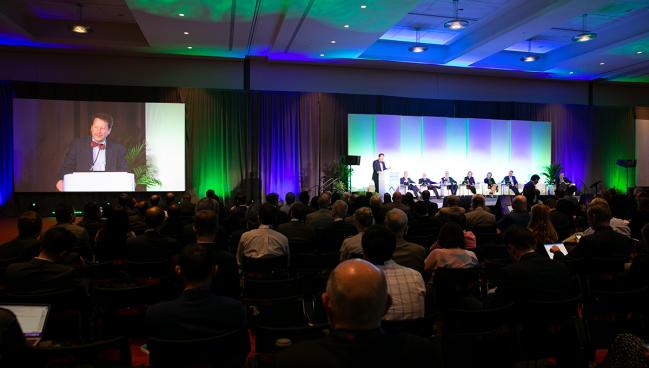To Cure What Ails US Healthcare: Creativity, Value, Fairness, Says FDA’s Califf
“We have a lot of things that really work well that we don't use enough,” Robert Califf told TCT attendees in a MedTech keynote.

In a keynote here at TCT 2022, he said it’s crucial to take note of the fact that the trajectory of health in the United States is not getting appreciably better.
Now that China recently passed the US in terms of life expectancy, Califf said the US is “essentially inventing the technology and the rest of the world is figuring out how to use it better, resulting in better health, better functionality, and longer lives.”
“To add insult to injury, for a life expectancy now shorter than China, we spent $4.1 trillion last year on healthcare in the United States. So, we’ve got to be spending a lot of money on things that aren't very helpful,” Califf added. “I know for sure, based on the data and also my experience in practice, that we have a lot of things that really work well that we don't use enough.”
A Wish List for How to Improve
Califf outlined some strategies that could help ensure that new technology is used wisely and that the value of it is demonstrated as clearly as possible. Toward that goal, he said better evidence generation can help inform physicians and payers.
“We ought to have a system that generates a continuous stream of evidence,” said Califf, “so as things move into practice, we figure out what the actual value is, what the worth is of the technologies that we are inventing, and where they should be applied.”
Next on his list of improvements is equity. “We have great talent in the US for making things that are for the benefit of people who are highly educated and wealthy, but we're not very good at developing technology that could be used for the benefit of people who are underserved,” Califf added. In addition to health disparities by race and ethnicity, gaps between urban and rural dwellers are widening, with estimated life expectancy differences of a much as 20 to 25 years based on where people live. Nowhere is the problem of these disparities playing out more prominently, he added, than in terms of who does or doesn’t get the antiviral Paxlovid (Pfizer) for COVID-19 infection.
Califf also devoted time to medical misinformation, saying that although he can’t prove it, he’s convinced that it is a leading cause of death in America.
“It's very hard for the average person, or even the average primary care physician, to sort out what's truthful and reliable from what's either naively or intentionally misleading,” he noted. “When it comes to [COVID] vaccination, there's absolutely no doubt that there are people who are purposely trying to dissuade, including governments [that are] trying to act against the United States.” He called on the medical community and the device industry to “take this seriously and get involved” in combatting health and medical misinformation.
Califf said he’s most excited about the ongoing advances in digital technology, with things like high-speed internet having the potential to change some healthcare disparities between populations by helping rural and underserved communities get up to speed with high-quality centers and physicians. “If you have a person with aortic stenosis, age 85 living in rural America, the probability that they're going to get a percutaneous valve is a lot lower than someone who lives next to a big medical center,” he added. “There's no reason for that to be the case where technology is going.”
Related to that, Califf said another area seeing significant growth is complex innovative devices like robotic surgery, which are driven by continuous learning with artificial intelligence. With so many of us surrounded by multiple devices capable of improving or monitoring health, he said pathways are needed to integrate them and create a system that benefits patients’ health.
Prior to becoming the 25th FDA head under President Joe Biden, Califf, a cardiologist by training, was a renowned clinical trialist, serving as vice chancellor of clinical and translational research as well as director of the Duke Translational Medicine Institute in Durham, NC. He was the founding director of the Duke Clinical Research Institute. He also led the agency for a brief time under President Barack Obama.
L.A. McKeown is a Senior Medical Journalist for TCTMD, the Section Editor of CV Team Forum, and Senior Medical…
Read Full BioSources
Califf RM. Keynote lecture: FDA perspectives on MedTech innovation in the future. Presented at TCT2022. September 16, 2022. Boston, MA.
Disclosures
- Califf reports that in the last 24 months he received salary/salary support/was an employee of Verily Life Sciences, and served as a board member for Cytokinetics and Centessa.


Comments